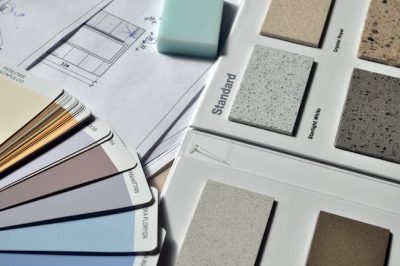When it comes to designing or renovating a home, choosing the right flooring material is a decision that significantly impacts both the aesthetics and functionality of your space. Flooring is not just a background element; it’s a foundational aspect of your home’s design and feel. With a myriad of options available, from classic hardwood to modern composites, this guide aims to simplify your decision-making process.
We’ll explore various flooring materials, considering factors like durability, maintenance, comfort, and cost, to help you make an informed choice that aligns with your lifestyle and design preferences.
Hardwood Flooring
Hardwood floors are timeless and offer a warm, natural look that can add significant value to your home. Options range from oak and maple to exotic woods like teak and bamboo. When shopping for hardwood flooring, websites like Onlineflooringstore.com.au provide a wide selection and useful insights into different wood types and finishes. Remember, while hardwood is durable and long-lasting, it requires regular maintenance and can be susceptible to moisture damage and scratches.
Laminate Flooring
If you love the look of hardwood but are on a tighter budget, laminate flooring is a great alternative-hiring a laminate flooring contractor can ensure a professional and seamless installation. It’s made of composite wood pressed together at high temperatures. The image of hardwood is then placed over the composite wood, covered with a protective layer. Laminate flooring is more scratch and moisture-resistant than real hardwood and is easier to clean, making it a practical choice for families and pet owners.
Vinyl Flooring
Vinyl flooring has evolved significantly and now comes in a variety of designs, including styles that mimic wood and stone. It’s known for its durability and moisture resistance, making it ideal for bathrooms and kitchens. Plus, vinyl is comfortable underfoot and can reduce noise – a great option for busy households.
Tile Flooring
Tiles, made from ceramic or porcelain, offer a long-lasting and low-maintenance solution. They are perfect for areas prone to moisture like bathrooms and kitchens. Tile flooring comes in an extensive range of colors, patterns, and sizes, allowing for creative and personalized designs. However, they can be cold and hard underfoot, which might be a consideration in cooler climates.
Bamboo Flooring
Bamboo flooring is a great eco-friendly and durable alternative to hardwood. It is made from natural vegetation that is highly renewable, making it a popular choice for environmentally conscious homeowners. Bamboo is strong, elegant, and offers a unique look, but it can be prone to scratching and moisture damage.
Cork Flooring
Cork is another environmentally friendly option that provides a soft, cushioned feel underfoot. It’s perfect for reducing noise and is naturally antimicrobial, which makes it a great choice for allergy sufferers. Cork flooring, however, can fade in direct sunlight and is susceptible to damage from heavy furniture.
Concrete Flooring
For a modern, industrial look, concrete flooring is a trend on the rise. It’s extremely durable, easy to clean, and offers a unique aesthetic. While concrete is long-lasting, it can be hard and cold, so it may require rugs or heating systems in residential settings.
Carpet
Carpet offers warmth and comfort, perfect for bedrooms and living areas. The variety in textures, colors, and patterns is vast, allowing for a lot of room for personalization. However, it requires regular cleaning and isn’t ideal for allergy sufferers or high-moisture areas.
Conclusion
Choosing the right flooring material for your home boils down to your personal style, budget, and practical needs. Each material offers unique benefits and considerations. Whether you seek the natural elegance of hardwood, the durability of vinyl, or the eco-friendliness of bamboo, your choice will lay the groundwork for your home’s overall ambiance and functionality.
Remember, flooring is an investment in your home’s future, so take your time to explore and choose a material that you will love for years to come.












